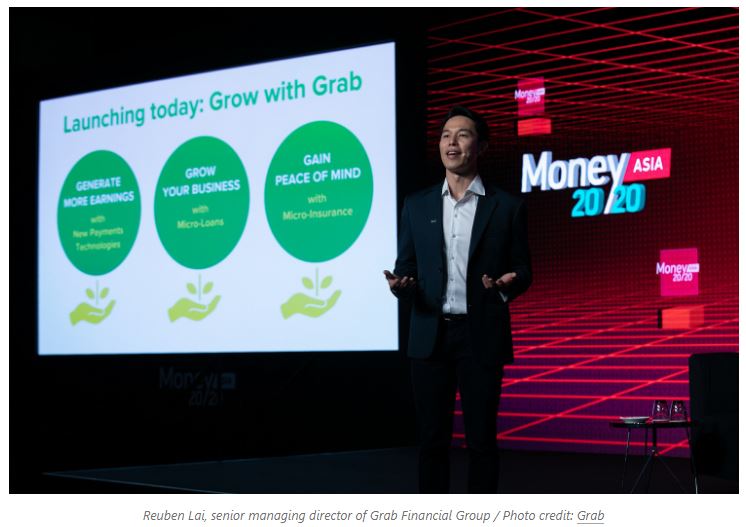How Grab is transforming finance and payments in Southeast Asia
Southeast Asia often makes headlines for its immense growth potential, with a rising mobile economy and increasing GDP.
But at the same time, there are still issues to contend with.
Approximately 73% of the region’s population remains unbanked, which has several adverse consequences.
For one, bank accounts enable people to conduct daily transactions, and not having one greatly limits upward mobility. Proper savings which can be used for emergencies and personal development may also be out of reach for a lot of the unbanked population.
Not having access to credit also puts a hard cap on companies’ ability to grow
– without funds to invest in their enterprises, small business owners will struggle to scale.
The answers created by technology
This is the landscape that Southeast Asian ride-hailing giant Grab wants to change. In March, Grab Financial Group, the firm’s fintech unit, announced a host of financial services for Singapore. These include micro-insurance services, lending for small and medium-sized enterprises, and postpaid products.
Grab initially created its mobile wallet GrabPay to address the challenges of cash in the region. But senior managing director of Grab Financial Group Reuben Lai says the launch of its fintech unit and the subsequent services adds on to this, providing solutions for micro-entrepreneurs and small businesses.
To succeed, the company established partnerships with financial institutions such as Indonesian digital wallet Ovo, US insurance company Chubb, and Japanese financial services firm Credit Saison.
What makes Grab’s approach interesting is how it presents on-the-ground solutions. The micro-insurance plans it offers its driver partners, for example, helps them avoid the high cost of annual premiums by allowing them to pay toward their premium obligations every time they take a ride on the Grab app.
“They can enjoy benefits like prolonged medical leave insurance, personal accident protection, and soon, ‘pay-as-you-drive’ auto-insurance,” adds Lai.
This approach also extends to the lending services it offers. Grab looks at minute-by-minute earnings to determine credit worthiness as opposed to the monthly statements needed by traditional banks. This makes it easier for micro-entrepreneurs and small businesses to obtain funds.
“Having worked with SMEs and an extensive network of driver and delivery partners, we are aware of their needs: from those looking to start their own businesses to those who use the money earned to put their kids through college,” Lai points out.
Grab’s expanding suite of services and GrabPay’s increasing market penetration, situates it as a competitive fintech solutions provider in the region. Its strategic payments partner in Indonesia, OVO, is also the top digital wallet in the archipelago.

Photo credit: Grab
Making a difference
One user of Grab’s SME Working Capital Loan program is Flesh Imp, a Singapore fashion brand. The firm used the product to solve its cash flow issues and expand its operations to China.
But Lai says Grab doesn’t just cater to companies; individuals can also benefit. Take Indonesian GrabBike partner Rudianto for instance. Prior to joining Grab, he worked in construction and didn’t own a smartphone. The company’s micro-loan solution enabled him to pay for a second motorcycle, save money to build a house for his mother, and become the owner of a chicken farm.
“We want to reach more Rudis out there in the region to help move them forward and grow with us,” shares Lai.
Grab’s expansion in Southeast Asia has not been immaterial.
For example, the company’s acquisition of Indonesian payments platform Kudo in 2017 enabled it to reach the country’s large rural population through small-town businesses known as warungs, and give them access to online transactions.
A joint study by the Center for Strategic and International Studies and Tenggara Strategics also found that Grab contributed US$3.3 billion to the Indonesian economy in 2018.
But wait, there’s more
Grab sees the potential to replicate this approach in other markets. Governments across Southeast Asia are investing more in tech, and the region boasts high smartphone penetration rates, which is good news for the unicorn’s ambitions.
“If we could reach more individuals like Rudi, local companies like Flesh Imp, and micro-businesses like the warungs we’ve reached in Indonesia, there is a lot of good we could achieve for this region,” says a Grab spokesperson.
Source: https://www.techinasia.com/grab-transforming-finance-payments-southeast-asia


 Thailand
Thailand




